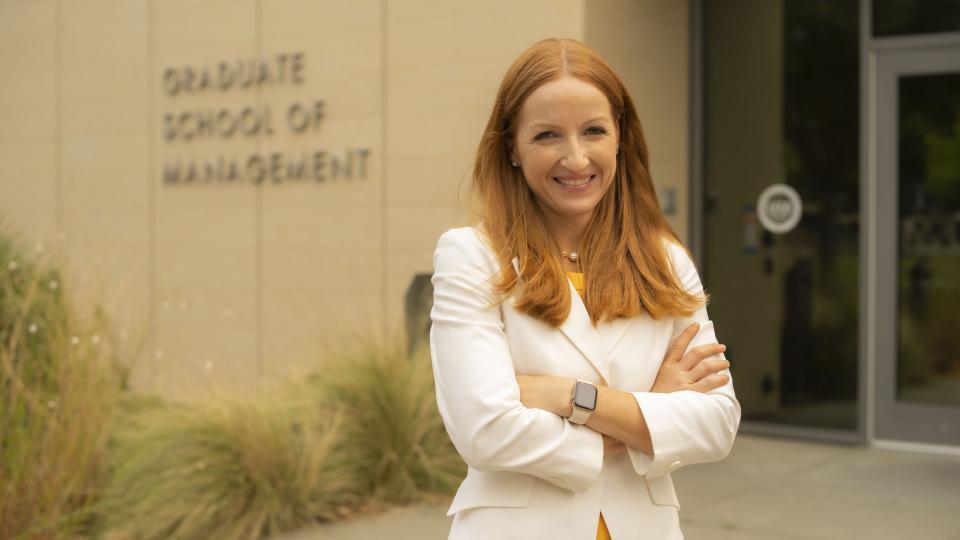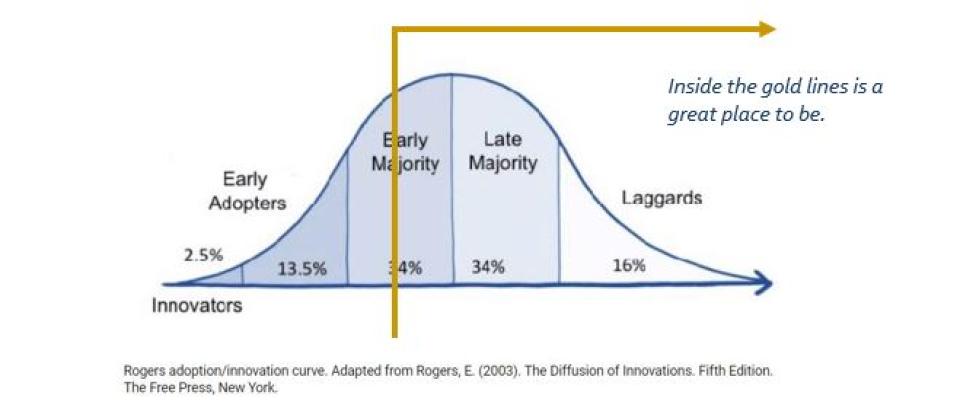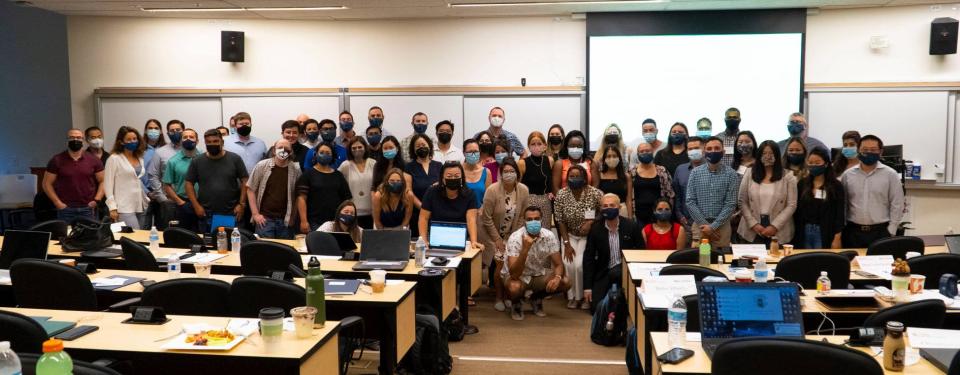Pursuing Your MBA: 5 Must-Know Tips to Become an Expert Marketer
Amplify word-of-mouth marketing with five surprising strategies

Many marketers are in a race to use all the latest digital marketing tools, technology and social platforms.
That’s the biggest mistake that marketers make.
But you might ask: Isn’t that what marketing in 2022 is all about?
My name is Vanessa Errecarte and I am a marketing lecturer at the UC Davis Graduate School of Management (GSM). I also have a marketing consulting business where I do both applied marketing for organizations and marketing teaching and training for corporations, organizations and industry conferences. My clients range from large corporations to sole proprietorships and I specialize in marketing campaigns, branding, and digital marketing
I love bringing this experience to my classroom and UC Davis MBA students.
From Student to Teacher
I was once in your shoes. I started the UC Davis MBA program ten years ago and earned my MBA by 2014.
I remember enjoying those years, being where you are now, and thinking about the journey ahead. It’s a great opportunity to learn from experts, engage with industry professionals, and network with the top minds in business.

Prior to earning my MBA, I had already earned a master’s in communication, where I studied the emergence of “Web 2.0.” Specifically, I created a grounded theory that defined the right steps to use online marketing to mimic traditional (in-person) word-of-mouth (WOM) marketing. We’ve known for decades that WOM is the most powerful marketing tool available, so imagine my excitement 15-plus years ago when I saw emerging online mediums that could help us amplify it.
During my MBA studies seven years later, I revisited some of these concepts and confirmed what I tell my clients and students on a regular basis: Marketing tools and technology (martech is a fancy word for those) change rapidly but the underlying marketing strategies behind them remain largely unchanged. So good news: You don’t have to be your techie teenage niece or nephew to be good at modern marketing.
Some companies succeed better at online marketing than others—and it’s not because those companies got a lucky break and chose the right emerging social platform. Rather, they use timeless content marketing strategies and layer well-chosen digital tools to disseminate it.
To emphasize this in my classes, I show a slide of a person loading a blank page into a copy machine. I tell students that the (blank) flier going into the machine is going to convert very poorly and warn them that despite knowing this, it’s easy to get caught up in this fast-moving world of martech innovation and forget the importance of the underlying messaging.
So how can we ensure that we put the winning combination of high-converting content behind the right tools and technology?
Here are five tips to get started:
1. Become an expert.
How do you make sure your brand stands out as the industry-leading expert? Be contrary or offer a different perspective. I’m doing this right now by telling you that marketing success in 2022 is actually not about the latest and greatest martech innovations.
You’re not used to hearing or thinking that, so immediately this different viewpoint presents a certain amount of expertise.
Creating expertise is a powerful strategy because expertise is scarce (have you ever waited to get into a medical specialist?), and humans are drawn to scarcity, especially scarcity that stands out by being a bit different. Humans also recommend scarcity to others (WOM).
Try this by thinking of a common viewpoint in your industry and decide how you can present a new and contrary way of looking at that concept. Bonus points for creating a framework.
2. Focus on your offer, not your product.
It’s been researched and proven again and again that humans make decisions (conversions) based on emotion, not facts—scary concept, I know. It actually doesn’t even matter if you’re a feeler (F) or a thinker (T) on your Myers-Briggs—you still involve massive amounts of emotion in your decision-making process (sorry Ts).
As marketers, we use this to our advantage in our content marketing strategies by describing benefits and values (how customers will feel in the car) versus features (folding rear view mirrors). By doing this, we help our ideal customers get closer to imagining the transformation they will have when they convert to our offer. Our product or service (features) is not the offer (customer transformation had by converting to said product or service).
Each time my students create marketing content, I challenge them to ask themselves, “Is this content focused on information (features) or transformation (benefits and values)?” Focus on a transformational offer to get the attention (and eventual WOM benefits) of your ideal customers. It works online and off.
3. Be consistent.
Now that you’re thinking of engaging ways to message your offer, let’s make sure it’s heard. Sometimes we have to be really redundant to make that happen. To help us tune in what's important and tune out what's not, humans have a little bundle of nerves at the base of our brains called our reticular activating system (RAS). Our RAS is what helps mothers and fathers hear their children call for help from two rooms away, while simultaneously not noticing that the faucet is still running.
In today's noisy world (we take in the equivalent of 105,000 words per day), this RAS gets easily overloaded, but it's our goal as marketers to get past it. This means that I teach my students to get really good at saying the same thing in a slightly different way, over and over again—and I teach them to use advertising to buy our way past the RAS when necessary, which leads me to my next point.

4. Be choosy.
It’s finally time to talk about the tools and tech, martech, if you will. The best way to lose marketing progress is to attempt to use all of the latest digital trends for your organization. Not only will you be too busy to focus on producing a high-converting and consistent message, you won’t get in front of the right users/audience.
If you’re familiar with the innovation curve (right) you know that new technology takes a long time to infiltrate the market. You want to use martech which has been adopted by at least half of the “early adopters” to disseminate your message organically first and then via paid traffic (digital advertising) because those platforms are where your consumers are right now. So how do you know what tools and tech most people have adopted?
Pew Research Center, HubSpot, and Social Media Today are a few good resources to find up-to-date surveys about martech adoption. Note: This strategy works for offline marketing too (yes, some people still watch TV and get newsprint on their hands, though it’s predicted that within 20 years, everything and everyone will have “gone digital”).
5. Relax.
I call digital marketing the Wild West of marketing. It’s only been around for around 20-30 years, compared to its traditional counterpart that’s been around since around 2000 BC (at least that’s when the first advertisement was found in ancient Egyptian carvings). As such, we are just now starting to examine privacy implications, certifications and the like.
In other words, modern marketers are learning the digital world as they go, and everyone else is playing catch up. If you don’t know something, you are not behind. You’re right where you should be. Just take a deep breath and focus on creating digital WOM by becoming an expert, creating transformative content, and following the innovation curve to find the right tools, tech, and platforms with which to disseminate it.
I love marketing because it carries with it the potential to change the world for good. The better you get at it, the more potential you have to do just that—and martech is more user-friendly than ever before. You just need the keys to the knowledge of how to do it—and I love handing them over to my students.


